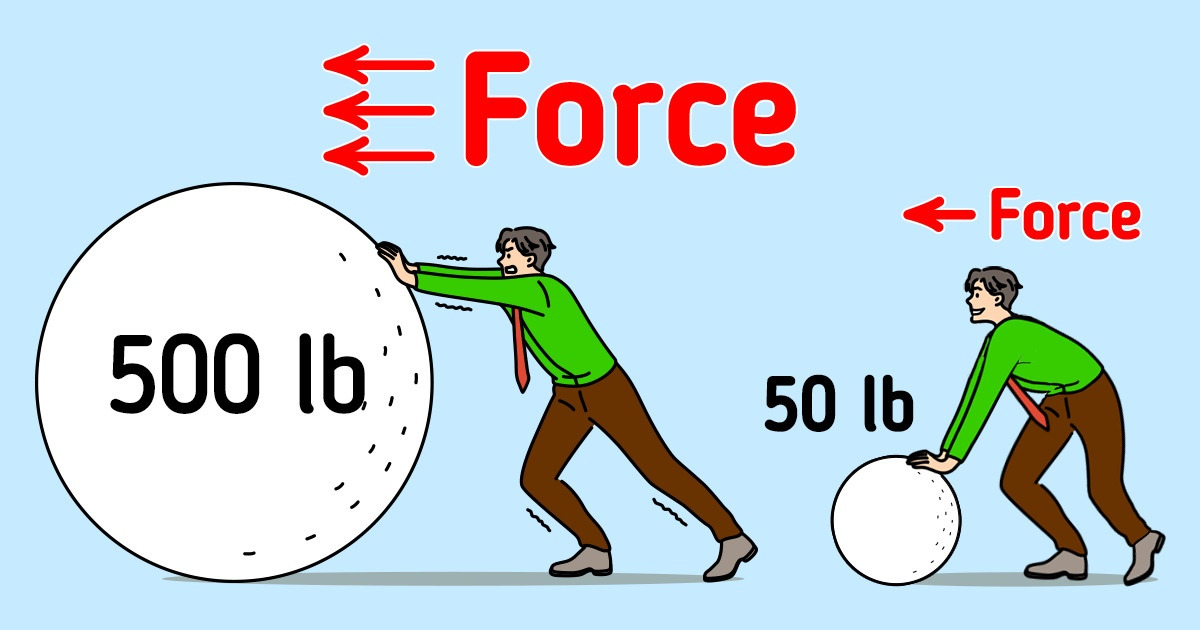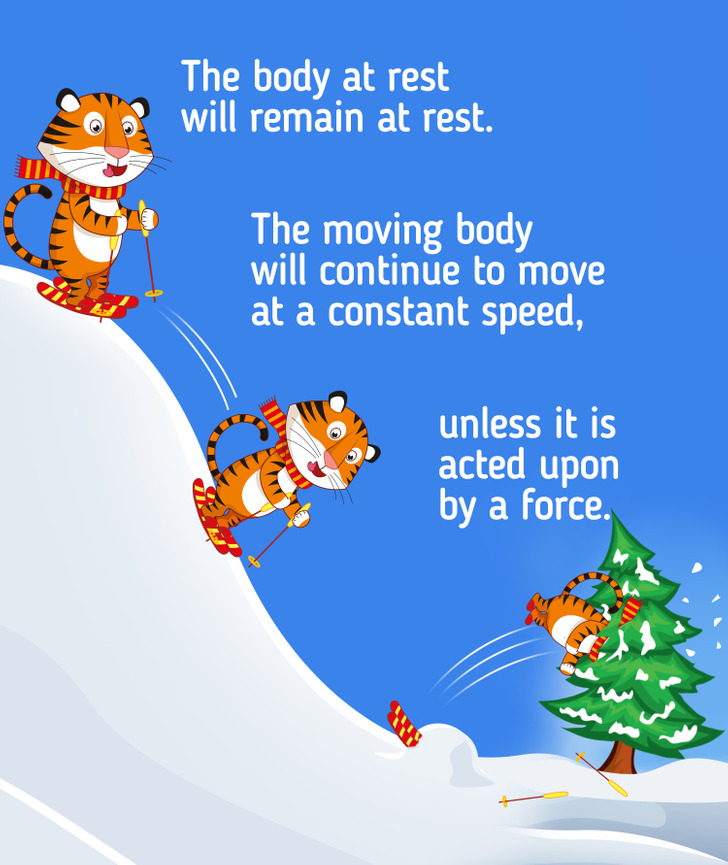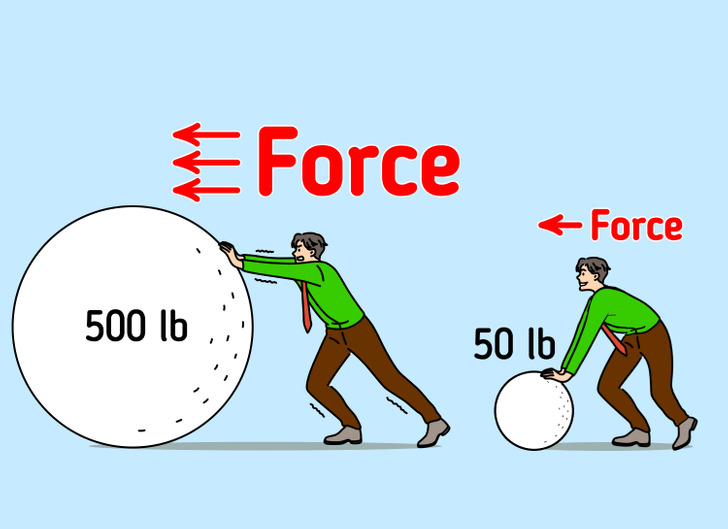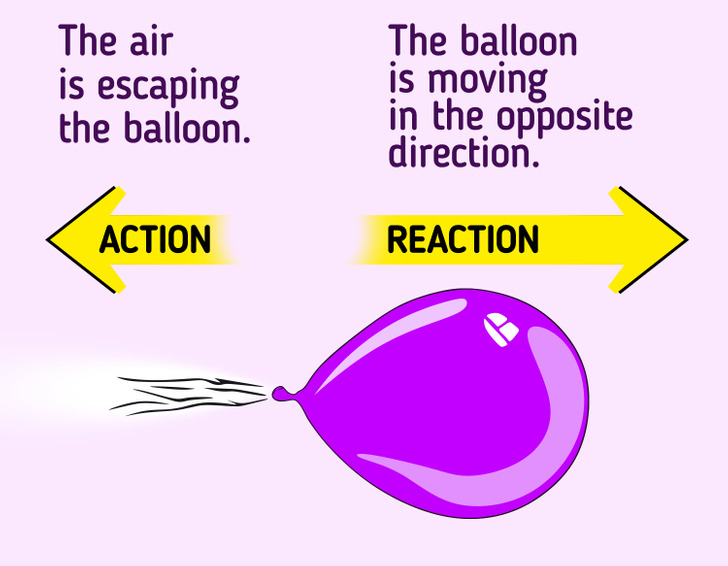How to Explain 3 Newton’s Laws With Real-Life Examples for Kids

Newton’s laws of motion are 3 statements describing the relationship between the forces acting on a body and the motion of the body. They were formulated by the physicist and mathematician Isaac Newton. To study and understand them you don’t need to go to a special lab. You just need to look around.
At 5-Minute Crafts we are sure that science can be fun. And we would like to tell you about how to explain 3 Newton’s laws with real-life examples.
Newton’s first law
- Statement of the law: “If a body is at rest or moving at a constant speed in a straight line, it will remain at rest or continue to move in a straight line at a constant speed, unless it is acted upon by a force.” This postulate is also known as the law of inertia.
- Real-life examples illustrating Newton’s first law:
✔ The simplest example to explain this Newton’s law is an object that is placed on the surface of the Earth. It will remain at rest until some force acts on it. Thus, a book on a bookshelf will not change its position until a force acts on it. Or a ball on a football pitch won’t move on its own unless it is pushed or pulled. A gust of wind can also make the ball move. This means that a force doesn’t have to come from a person.
✔ While traveling on a bus, if the driver brakes abruptly, we feel a momentary pull in the forward direction. The reason for this jerk, which passengers sitting inside the bus feel, is the law of inertia. Due to the inertia of motion, our body continues to move even after the bus has stopped, thereby pushing us forward.
✔ A marathon runner can’t stop immediately after crossing the finish line. They continue to run for a few more feet. This is due to inertia which doesn’t let the body stop abruptly and forces it to maintain its state of motion.
✔ A ball rolling on the ground tends to maintain its state of motion till infinity unless it is acted upon by an external force. However, such force exists. This is the friction force that acts on the ball from the outside and helps stop the ball from moving.
Newton’s second law
- Statement of the law: “The force acting on an object is equal to the mass of that object times its acceleration.” This means that the acceleration generated by a body is directly proportional to the force applied to it and inversely proportional to the mass of the body.
- Real-life examples illustrating Newton’s second law:
✔ Pushing a car and a truck: after the truck and the car are pushed with the same intensity, the car will accelerate faster than the truck. Because the mass of the car is less than the mass of the truck.
✔ Pushing an empty basket is also easier than pushing a loaded one. It has to do with the relation between the mass of an object, the force applied to it, and the acceleration generated.
✔ A soccer ball when struck develops certain acceleration. This acceleration is directly proportional to the force applied to it. In simple terms, the harder you hit the ball, the faster it will move, thus demonstrating Newton’s second law in everyday life.
Newton’s third law
- Statement of the law: “When 2 bodies interact, they apply forces to one another that are equal in magnitude and opposite in direction.” The third law is also known as the law of action and reaction.
- Real-life examples illustrating Newton’s third law:
✔ When a rubber ball falls onto the floor, at the moment of hitting the floor, it acts on it with a downward force. This is action. The floor reacts on the ball with the same force, only directed upward. So the ball bounces up.
✔ The air inside the untied balloon is pushed out through the open end. This causes the balloon to move in the opposite direction. The force of the air escaping is the action. And the movement of the balloon is the reaction.
✔ If a person jumps out of the boat, their action will cause a reaction. It will be equal, but opposite in direction: at the moment of the jump, the boat will move backwards. Because of this, a person can end up in the water, not on the shore.


